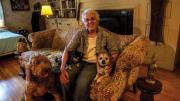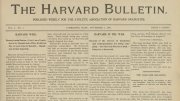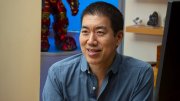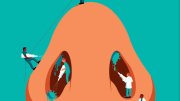Sitting in her kitchen in Peterborough, New Hampshire, Elizabeth Marshall Thomas ’54 is talking about animal consciousness when her two dogs, chihuahua Chapek and pug mix Kafka, begin madly snarling at each other. “What are you doing, and why?!” she demands. She appears to believe the dogs really understand her, and judging by their sudden hush, they might.
Thomas would know: she has spent half a century chasing stories about life on earth, and has written 14 books, from anthropology texts to novels to studies of cats, deer, and canines. The Hidden Life of Dogs (1993)—for which she traveled to the Canadian Arctic to research wolf packs—became an unexpected New York Times bestseller. As she explains in her memoir Dreaming of Lions (2016), “While wandering down the road of life, it helps to look for something more meaningful than oneself. Some find it in religion...I find it by keeping my eyes open.”
Virtually every book she has written—including two memoirs and her forthcoming reflections, Growing Old—has been shaped by her early experiences of trekking through South West Africa’s Kalahari Desert. In 1951, Thomas had just finished her sophomore year at Smith (before transferring to Radcliffe) when she and her brother, John ’55, and their parents set out to find the hunter-gatherer people then called “Bushmen”—today known as Ju/’hoansi or !Kung, in present-day South Africa and Namibia. Thomas says her father, Laurence Marshall, a co-founder of Raytheon, had recently retired, after working so hard through World War II that he barely saw his children, and wanted to explore “some place where there was nothing on the map. It was ‘unexplored,’ as the whites called it.”
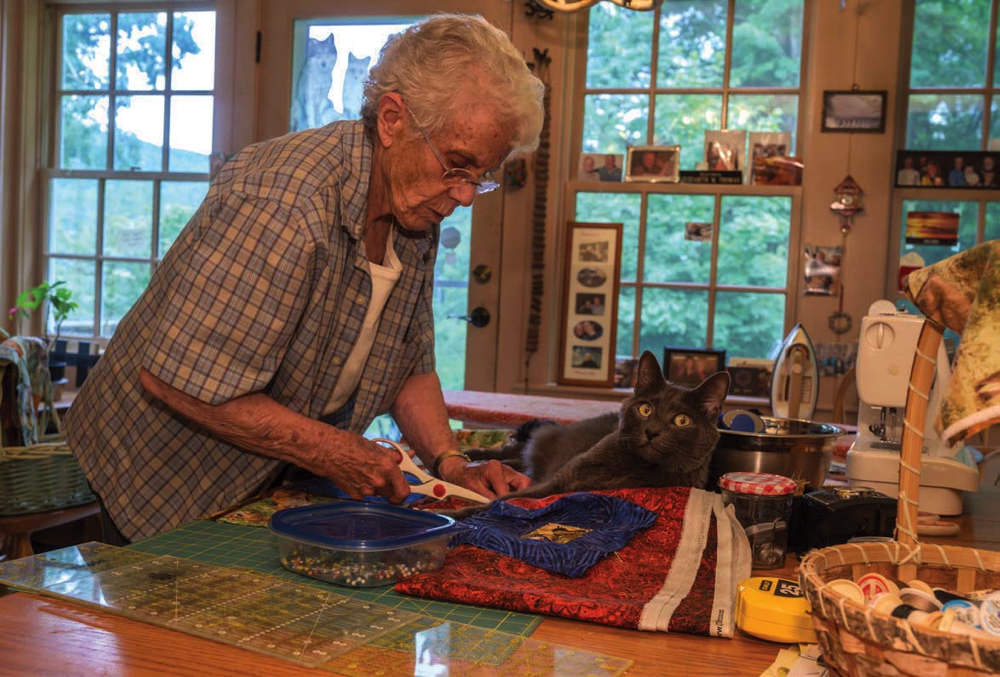
Claude the cat keeps watch while Thomas works on her sewing.
Photograph by Jim Harrison
He approached Harvard’s Peabody Museum of Archaeology and Ethnology about mounting an ethnographic study as part of their sojourn. Thomas’s mother, Lorna Marshall, A.M. ’28, conducted fieldwork during their stay and later wrote two ethnographies on the !Kung; John Marshall went on to a career in anthropology, and chronicled daily life in the Kalahari through documentaries. The family’s work provided an invaluable account of the !Kung before their traditional lifestyle disappeared in the late twentieth century. An exhibition highlighting that contribution, “Kalahari Perspectives: Anthropology, Photography, and the Marshall Family,” was held at the Peabody through this past March (see “Shifting Sands,” September-October, page 84).
All told, Thomas herself spent almost three years among the Ju/’hoansi, in three separate trips. She picked up some of the !Kung language and spent her days observing their day-to-day lives. “Women weren’t allowed to have anything to do with hunting,” she explains. “We think of hunting as the big exciting thing, but I went gathering with the women and it was incredibly interesting….They knew everything about their ecosystem.” She remembers how people dug deep into the ground to find a specific species of poison grub, and squeezed its insides onto hunting arrows, carefully avoiding the tip so it wouldn’t accidentally scratch someone. “A scientist from Harvard came there much later and he interviewed some of them and ended up saying they know almost as much as we do,” Thomas reports. “Well, I have never heard such bullshit in my life. They knew a hundred times more.”
She calls the !Kung lifestyle “the old way,” a reflection of how humans lived before agriculture and permanent settlements, when their task was to focus on the present, the world immediately around them. It “clings to us still, in our preferences, in our thoughts and dreams, and even in some of our behavior,” she wrote in her book, The Old Way (2006).
Thomas thinks it's clear that animals evolved minds and emotions, just like humans.
Thomas’s experiences also made her see humans as part of the natural world, not separate from—or masters of—it. “If you’re a hunter-gatherer,” she says, “you can’t think of yourself as having dominion over animals”: there was no such thing as domestication. She noticed the careful interactions of animals in the wild, the ways they negotiated with one another and made decisions about how to use their energy. And she saw how tiny changes in the balance of resources can shift how they relate to one another. She remembers noticing that the lions and people there didn’t harm each other. She wondered why. Some of her !Kung hosts told her that “if we don’t bother them, they don’t bother us,” she remembers, “But I don’t think so.” She thinks it was because in the Kalahari, water is scarce, and humans and lions needed to share water holes. If they attacked one another, then one group would have to leave, she explains, and the lions might be forced to battle another group of lions for access to their water. “Lions are very smart. Very. They are very, very observant.”
Some of what Thomas has written about the Ju/’hoansi is not uncontroversial. In The Old Way, she treated the culture as though it were frozen in time, a faithful representation of how humans lived as semi-nomadic hunter-gatherers before the agricultural revolution. She attributed facets of the culture to human evolution, rather than to the development of one specific society, because, as she puts it, “there are only so many ways you can live as a hunter-gatherer.” But these speculations are highly questionable, argued Emory University anthropologist Melvin Konner, Ph.D. ’73, M.D. ’84, in The New York Review of Books: !Kung society “probably resembles just one of the environments of evolutionary adaptation,” he wrote. “Most of our ancestors lived in richer environments: some had high enough population densities to develop some social stratification, which does not exist in Bushmen societies...The Bushmen are relevant, but they are not, as Thomas implies, the entire story of our Old Way.” But for Thomas, the academic claims are less important than what she learned directly from the people she got to know and lived among: such as how to raise children (kindly, without harsh disciplining and scolding) and how to repress negative emotions for the good of the group. It opened up to her a whole new way of being in the world. As Konner further notes, “The Old Way is at its best when read as a fluid, evocative narrative of an adventure with people whose extremely challenging way of life is now gone.”
Thomas’s love of the natural world also goes back farther, to the summer/weekend house in rural New Hampshire that Laurence Marshall built for the family in the 1930s. Although she grew up a few blocks from Harvard Yard, it was the woods around Peterborough where she felt most at ease. “I only wanted to be here,” she remembers. It was where her father taught her to be still, to sit silently for hours and listen for the quiet footsteps of wildlife nearby. Once, they saw the fresh tracks of what Thomas was sure was a panther in snow.
Thomas has lived in the house full-time since the early 1980s—with her husband, Stephen Thomas ’54 (who died in 2015), and many cats and dogs. There have been hard times there, too. Peterborough was where her daughter, Stephanie Thomas ’80, at age 17, was riding in the bucket at the front of a tractor, when she fell out and was accidentally run over. Suddenly, she was a paraplegic for life. The event was so shocking, Elizabeth wrote in Dreaming of Lions, that she never cried while tending to her child that first day in the hospital—she was beyond crying. But Stephanie eventually became an activist with American Disabled for Attendant Programs Today, the group instrumental in passage of the Americans with Disabilities Act. “Boy, did she make a life for herself,” Thomas says now. “She’s been to jail 30 times: I’ve never ceased to boast about that.”
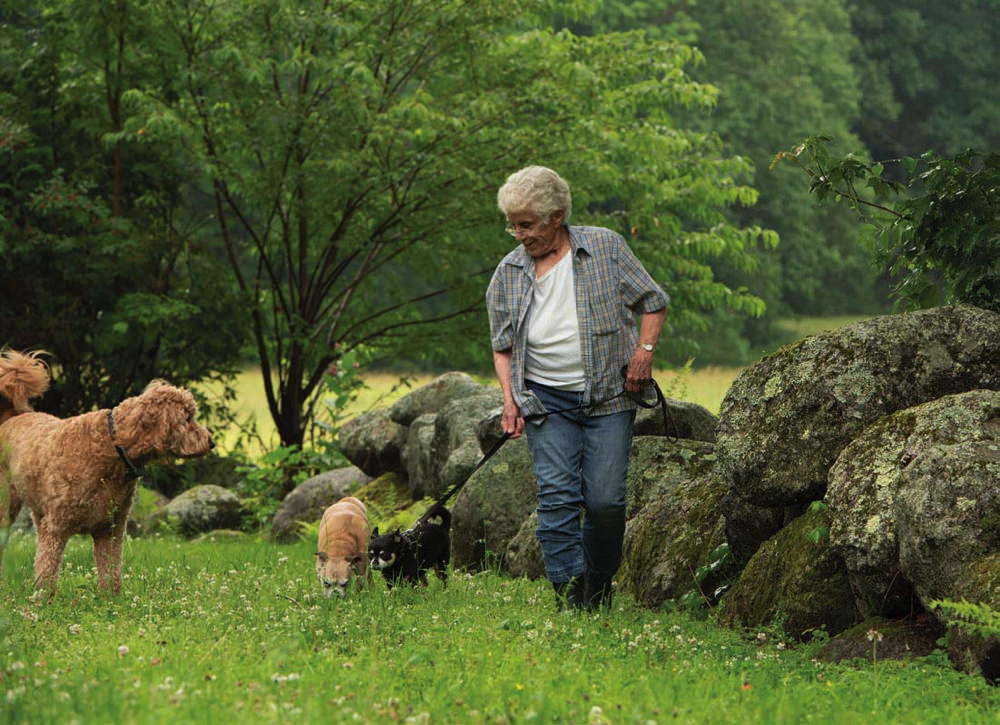
Thomas’s family owns a large stretch of land in New Hampshire, which is conserved and sustainably managed through a state program.
Photograph by Jim Harrison
From her New Hampshire home, Thomas wrote most of her books and co-wrote, with close friend and naturalist Sy Montgomery, a Boston Globe column about human relationships with animals, now anthologized in Tamed & Untamed: Close Encounters of the Animal Kind. Both women have always rejected the premise that nonhuman animals don’t think, feel, and know things as humans do, and writing for the public has provided an ideal platform for communicating that message. They also believe in the power of direct observation. It was while roaming meadows and forests near her house that Thomas began gathering anecdotes and scenes of nature and animal life, like those in her The Hidden Life of Deer (2009). “You don’t need scientific training,” she insists. “You need to keep your eyes open and sit there and watch.”
These assertions have sometimes made her unpopular with scientists. She challenges the rejection of “anthropomorphism” in biology—the idea that it’s wrong to assign human attributes, emotions, or internal experiences to animals. Twentieth-century scientists largely stuck instead to observable and quantifiable behavior, rather than the squishy potential subjectivity, of animals. For Thomas, the two are inseparable.
Increasingly, the scientific community has come around to a similar view, and is conceiving new methods for studying animal consciousness. In 2012, for example, an international group of scientists issued the “Cambridge Declaration on Animal Consciousness,” which stated that nonhuman animals have the neurological structures required for consciousness. But Thomas has never made academic claims: she is more interested in writing entertaining stories and promoting empathy for animals than in scientific precision. She thinks it’s clear that animals’ minds and emotions evolved, just as humans’ did, and if we can’t access these qualities directly, we can use our imaginations. Her writing begins with simple observations about what animals around her are doing and what she gathers they might be thinking and feeling. Her prose is short, light, and cut to the bone; Montgomery calls it a “laser beam into what she sees as true.”
In The Hidden Life of Deer, for example, Thomas describes how deer use humans to their advantage: “Once, a deer used us personally. My husband and I were standing outside when a doe came bounding out of the woods. Almost before we knew what was happening she changed course and ran straight for us, dashing by so close we felt the wind of her passing. Her mouth was wide open. We heard her gasp for breath. Then a wolf-size coyote ran out of the woods, right on her trail....He stopped in his tracks when he saw us, though, gave us a deep, bitter look, then turned his head aside and grimaced, showing his teeth, as if saying to himself, damn those people.”
Today, it’s just 87-year-old Thomas and her two dogs and three cats in the house, although she is about to move in with her son, who lives across the road. Growing Old is written in her usual chatty tone, and filled with candid, funny, warm accounts of the natural process of aging, which she likens to “wandering around a shopping plaza, looking for the supermarket in a setting that seems familiar, except you’re not sure you recognize everything you see. Have they changed things around here, or are you in the wrong place?” Getting old, she writes, is a distinctly human matter: “Most animals don’t die of old age. They die of something else: starving or a fight or predator.”
Still, she seems to take some comfort in knowing that all animals will die; that death is just a condition of life. That inevitability has provided her with another lens through which to empathize with animals, especially those dying in conditions much less fortunate than hers. A “vole was in the corner of my porch with two of my cats approaching from either side,” she writes. “She couldn’t escape, she knew the cats would kill her, and she covered her eyes with her hands.” Thomas’s watchfulness gives voice to these moments in the lives of small creatures—moments we might not otherwise even notice—and allows us to see ourselves in their vulnerabilities. “All animals fear death—even insects fear death,” she notes, “and do what they can to avoid it.”
